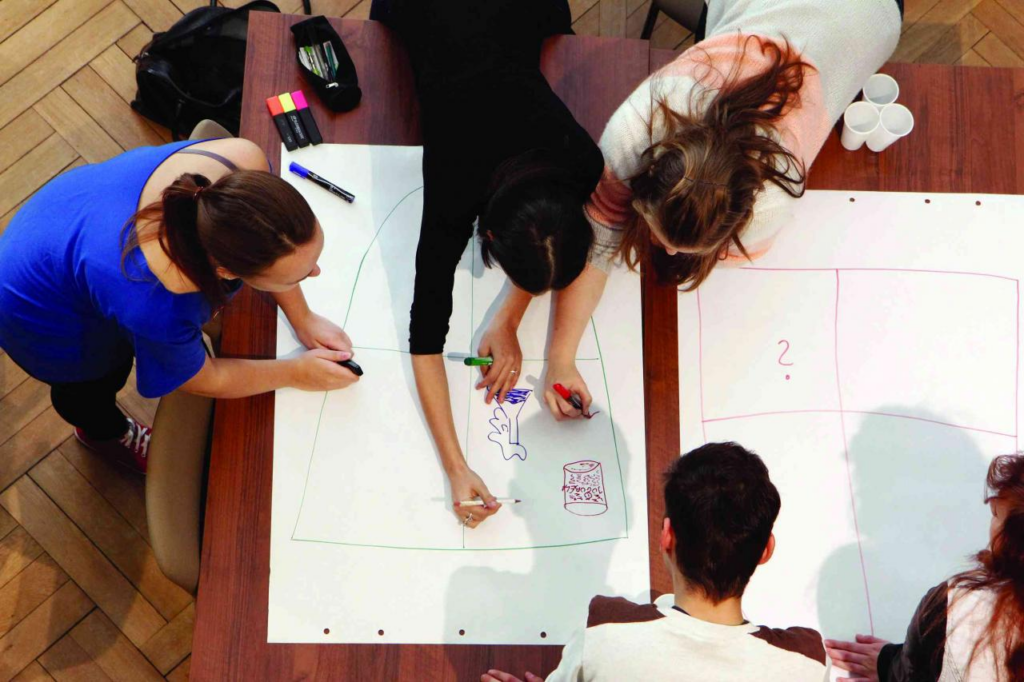Some cities are developing new approaches to ensure that resources are available to experiment with new solutions to their problems. They are using their buying power to orientate, speed up, amplify and sometimes systematise the development of these social innovations. The experiments show that social innovation is not only for wealthy communities, which can free up the necessary time, financial resources, human resources and interest, but is accessible to all cities that want to take risks and experiment.

Seed money to kick-start initiatives

New policy instruments are emerging to respond citizens’ willingness to take part in governance, and participative budgeting is one of them. In Seoul, 21 billion Korean Wons (about €16.5 million), which represents 2.3% of the yearly budget of the city, is allocated by citizens. A three-step process starts and ends with citizens: in a recent exercise citizens generated more than 1,500 ideas, a 250-strong Civil Budget Committee selected 560 of them, and finally citizens retained 352 proposals for implementation. In Gdańsk, a Participative Citizen Budget process allows citizens to express their views on proposals in person or online, and to allocate priorities to different projects. It is seen as part of strengthening the feeling of identity and belonging to the city.
In some instances, the city administration has used its own resources to kick-start grassroots initiatives. Through an initial investment with which it responded to citizens’ needs, it has further encouraged citizens to take actions, implementing solutions for their local needs. This has for example been the case in the 19th district of Budapest in Hungary, where the administration supported the setting up of community gardens as a base for outdoor activities, community building and food provision. The administration made the initial investment to create the allotments and has since supported ongoing technical expenses. Some private companies also contributed to the purchase of the equipment and watering system.
In addition to its financial support, the administration took part in some of the activities organised on the spot. It let the management of the garden to the City Garden Association (Városi Tanya Egyesület). The success of the garden led to the creation of other gardens and has had a significant impact on social cohesion through the empowerment of citizens – both adults and children – who have benefited from the garden and the networks created. By sharing responsibilities, the city administration has greatly reduced the costs and time it needed to invest in the project
Orienting public procurement to support social innovation

Public procurement is a difficult sector for innovation: first of all, it is subject to strict European legislation, which limits the room for thinking out of the box. Secondly, public procurement is often bound to short-term thinking, budget issues, predefined lists of needs which are not user-centred, and administrative thinking rather than a purpose-led approach. However, in some instances, cities have used public procurement policies to stimulate social innovation and to encourage ‘unusual suspects’, such as SMEs, NGOs or groups of citizens, to access calls for tenders and projects.
In some instances, the traditional procurement process has been opened up and moved away from a purely monetary approach (getting the cheapest service) to focus increasingly on quality criteria (purchasing innovative products and services) (Adams 2014). This has been the focus of a Danish pilot project, Innovation on the shopping list, coordinated by MindLab and the Business Innovation Fund. Based on the experience of civil servants, it is presenting the long-term benefits of using public procurement differently in order to reorient the way municipalities and regions purchase services in the welfare sector. It has developed a practical tool to enable cities to envisage how they could transform their public procurement procedures.
Another form of procurement, which goes one step further and has enabled cities to use their buying power to develop social innovation, is commissioning services. These are new approaches to encourage contestability, competition and collaboration between public, private and non-government service providers. They create an increasingly mixed public service market.
Other forms of financing and stimulating social innovation in cities
Another way of making the best out of procurement is to organise external creative competitions to generate innovative solutions to city problems, at the same time as promoting collectives of citizens or small enterprises, whose innovative solutions are still often not considered. This can take the form of prizes, as proposed by the BCN Open Challenge in Barcelona (Spain). The BCN Open Challenge attempts to guarantee space for small companies to innovate in the city. As an international call, it seeks to procure innovative and sustainable solutions to transform both public services and places in Barcelona, focusing on six social issues[i]. It is organised by Barcelona City Council together with a supporting company, Citymart. The prize of the BCN Open Challenge is a direct commitment to contract the six winning solutions. Through this competition, the City of Barcelona aims to make the process of procurement decisions more cost-efficient and transparent, and to allow small entrepreneurs to be part of this process and to implement their innovative solutions.
The room for manoeuvre within the use of public procurement is highly constrained in legal terms. In order to try out and benefit from new approaches to stimulate social innovation, cities should also look for complementary funding opportunities. Other innovative forms of funding which can support social innovation in cities in addition to the city administration’s own resources include (TEPSIE, 2014):
- Social Investment Funds
- Loans
- Venture philanthropy
- Crowdfunding
To read more in detail on each of the above please click here.
Cities therefore have many ways of using their buying power and identifying new funding opportunities to support social innovation. Adopting such an approach is an innovation in itself. It is for each city to identify the existing potential and define new economic models.
EU funding for the promotion of social innovation in cities
The European Commission provides funding opportunities for projects seeking to develop social innovation as a methodology in policy fields such as social policy (PROGRESS programme), Strategic Guidelines and Regulations on Cohesion Policy for the programming period 2007–2013 (European Council, 2006) and Article 16 of the Structural Funds Regulation, Country Specific Recommendations, including the use of the European Social Fund), employment policy (the programme for Employment and Social Innovation – EaSI), agricultural policy (the EAFRD and LEADER for rural development programmes and measures as well as local innovative governance approaches) and regional policy (RegioStars awards by DG Regional and Urban Policy).
Finally, URBACT is also providing funding for transnational networks of city partners working jointly on single thematic issues. By asking each participating city to set up a Local Support Group in order to coproduce a Local Action Plan, URBACT strongly promotes an open and participatory approach. The experience of more than 500 Local Support Groups active in URBACT II shows that the degree of participation and openness in co-designing integrated urban policies varies depending on factors such as institutional and administrative culture, policy area addressed and local leadership. The city of Gdańsk , for example, stressed the way in which its participation in the My Generation and My Generation at Work networks contributed to triggering co-operation with NGOs and took them from getting to know each other to co-working on specific policies.
Read More:
Social innovation in cities – URBACT Capitalisation
Case Study – Amerfoort: designing a collaborative city administration – URBACT Capitalisation
Cast Study – Gdańsk: initial steps towards responsibility sharing – URBACT Capitalisation
[i] Reducing bicycle theft, empowering support systems to reduce social isolation, monitoring pedestrian flows, digitising museum and archive collections, automatically detecting and reporting damaged road surfaces, and empowering local retail through technology.

Originally published on the URBACT blog on 19 June 2015.
